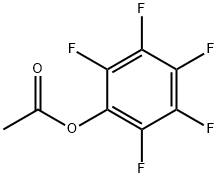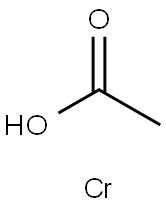DODECYL ACETATE
Synonym(s):Dodecyl acetate;Lauryl acetate
- CAS NO.:112-66-3
- Empirical Formula: C14H28O2
- Molecular Weight: 228.37
- MDL number: MFCD00008973
- EINECS: 203-995-1
- SAFETY DATA SHEET (SDS)
- Update Date: 2025-01-27 09:38:02

What is DODECYL ACETATE?
Description
Lauryl acetate has a characteristic citrus-rose odor. The corre sponding flavor develops only on dilution. May be prepared by acetylation of lauryl alcohol.
Chemical properties
Lauryl acetate has a characteristic citrus–rose odor. The corresponding flavor develops only on dilution.
Occurrence
Reported found in sour cherry, cardamom, bitter orange, lime, lemon and mandarin peel oils.
The Uses of DODECYL ACETATE
1-Dodecanol Acetate can be used as a foaming agent in the purification process of quartz sand. Furthermore, it is a main component of the essential oil from the flowers of Etlingera elatior (Jack) R. M. Smith, which is found to be active against Staphylococcus aureus, Bacillus cereus, Candida albicans and Cryptococcus neoformans.
What are the applications of Application
Dodecyl acetate is a dodecyl ester of acetic acid
Preparation
By acetylation of lauryl alcohol.
Definition
ChEBI: Dodecyl acetate is a carboxylic ester.
What are the applications of Application
Dodecyl acetate is useful in perfume formulations, particularly as a topnote ingredient - in spite of its high boiling point. In fact, the performance of odor, shown by this chemical, is quite remarkable. A lasting odor from the very topnote throughout the various stages of evaporation of the fragrance. However, it needs blending with other materials to become more attractive, especially Citrus oils, light, fruity notes or light woody notes. It will also impart a pleasant freshness to sophisticated Pine fragrances, and in Carnation bases. Dodecyl acetate is also used in flavor compositions for imitation Butter, Lemon, Orange, Peach, Pineapple, etc. and in various meat flavor bases. The concentration in the finished product will normally be about 1 to 6 ppm.
Synthesis Reference(s)
The Journal of Organic Chemistry, 38, p. 764, 1973 DOI: 10.1021/jo00944a031
Synthesis, p. 309, 1971
Toxicity evaluation
Both the acute oral LD50 value in rats and the acute dermal LD50 value in rabbits exceeded 5 g/kg (Moreno, 1974). In a study of toxicity to fish, the toxic concentration of lauryl acetate to Carassius auratus and Salmo gairdnerii during a 6-hr observation period at 15°C was found to be 5.20 mg/litre.The surface tension (50.1) was not related directly to the toxicity (Marchetti, 1964).
Properties of DODECYL ACETATE
| Melting point: | 1.3℃ |
| Boiling point: | 150 °C15 mm Hg(lit.) |
| Density | 0.865 g/mL at 25 °C(lit.) |
| refractive index | n |
| FEMA | 2616 | LAURYL ACETATE |
| Flash point: | >230 °F |
| storage temp. | Sealed in dry,Room Temperature |
| solubility | Acetone (Slightly), Chloroform (Slightly), Hexanes (Slightly) |
| form | Oil |
| color | Colourless |
| Odor | at 100.00 %. sweet fresh laundared cloths clean waxy |
| JECFA Number | 133 |
| CAS DataBase Reference | 112-66-3(CAS DataBase Reference) |
| EPA Substance Registry System | Acetic acid, dodecyl ester (112-66-3) |
Safety information for DODECYL ACETATE
| Signal word | Warning |
| Pictogram(s) |
 Exclamation Mark Irritant GHS07 |
| GHS Hazard Statements |
H227:Flammable liquids H315:Skin corrosion/irritation |
| Precautionary Statement Codes |
P210:Keep away from heat/sparks/open flames/hot surfaces. — No smoking. P280:Wear protective gloves/protective clothing/eye protection/face protection. P370+P378:In case of fire: Use … for extinction. P403+P235:Store in a well-ventilated place. Keep cool. P501:Dispose of contents/container to..… |
Computed Descriptors for DODECYL ACETATE
New Products
3-Iodophenylacetic acid 3-Pyridineacetonitrile, α-hydroxy- 2-Propanamine, 1-chloro-, hydrochloride (9CI) 3-(hexyloxy)-4-(pyridin-3-yl)-1,2,5-thiadiazole 2-Hexyn-1-ol Dibenzo-18-crown-6 Nickel(II) perchlorate hexahydrate, 98% 4-Bromophenylacetonitrile, 95% 3-Bromo-4-fluoroaniline, 97% Sodium tetraborate decahydrate, 98% Palladium(II) acetate, trimer, Pd 99% 4-Bromo-2-chlorotoluene, 97% N N Dimethylformamide Dimethyl Acetal (Dmf Dma) 2,3-Dichloro Benzoyl Cyanide [Side Chain] Bis(2-Chloroethyl) Amine Hydrochloride L-Glutamic Acid Diethyl Ester Hydrochloride 5-(Difluoromethoxy)-2-Mercaptobenzimidazole 1-Ethyl-3-(3-Dimethylaminopropyl)-Carbodiimide Hydrochloride [EDC Hcl] 1,4-Napthoquinone Bromoiodomethane Sodium Bicarbonate Methylene Dichloride (MDC) Ethyl Acetate Indole-3-Carbinol (I3C)Related products of tetrahydrofuran








You may like
-
 112-66-3 Dodecyl acetate 98%View Details
112-66-3 Dodecyl acetate 98%View Details
112-66-3 -
 112-66-3 98%View Details
112-66-3 98%View Details
112-66-3 -
 Dodecyl Acetate CAS 112-66-3View Details
Dodecyl Acetate CAS 112-66-3View Details
112-66-3 -
 Dodecyl acetate CAS 112-66-3View Details
Dodecyl acetate CAS 112-66-3View Details
112-66-3 -
 17604-74-9 3-Pyridineacetonitrile, α-hydroxy- 98+View Details
17604-74-9 3-Pyridineacetonitrile, α-hydroxy- 98+View Details
17604-74-9 -
 Cyclohexane, (2-propynyloxy)- 67967-07-1 98+View Details
Cyclohexane, (2-propynyloxy)- 67967-07-1 98+View Details
67967-07-1 -
 3-Iodophenylacetic acid 1878-69-9 98+View Details
3-Iodophenylacetic acid 1878-69-9 98+View Details
1878-69-9 -
 132945-75-6 (S)-1-Boc-3-methanesulfonyloxy-pyrrolidine 98+View Details
132945-75-6 (S)-1-Boc-3-methanesulfonyloxy-pyrrolidine 98+View Details
132945-75-6
